- Home
- About Us
- VOCs
- Molecular Tech
- Product & Service
- Contact
- GO BACK
- Contact
- Announcements
- Press
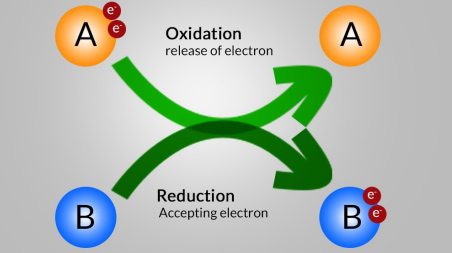
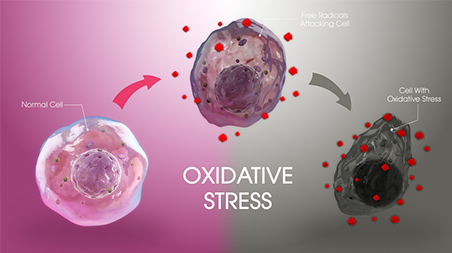 < Oxidative Stress: Effects, Risk factors, Managing and Preventing, Scientific Animations >
< Oxidative Stress: Effects, Risk factors, Managing and Preventing, Scientific Animations >
Redox is a phenomenon witnessed throughout the natural world and is the starting point for creating and maintaining the energy of life. The redox balance regulates energy generation and physiological activities, such as cell signaling, gene transcription, apoptosis, cellular aging, and the aging of the whole organism.
While 90% of the inhaled oxygen is used to generate energy in the electron transport chain (ETC) of mitochondria, 4-5% is used to create reactive oxygen species (ROS), such as hydrogen peroxide (H2O2), superoxide (O2-), and hydroxyl radical (OH-).
If reactive oxygen generated by energy production or signaling substances is not sufficiently removed, reactive oxygen that has lost electrons due to oxidation often takes electrons from proteins in our body and attacks DNA and cellular components, causing damage to cells or severely damaging cellular structures such as cell death. Therefore, a balance between prooxidants and antioxidants is essential for organisms that use oxygen.
However, when prooxidants dominate and disrupt the balance, cells are damaged by increased reactive oxygen. This state is called oxidative stress.

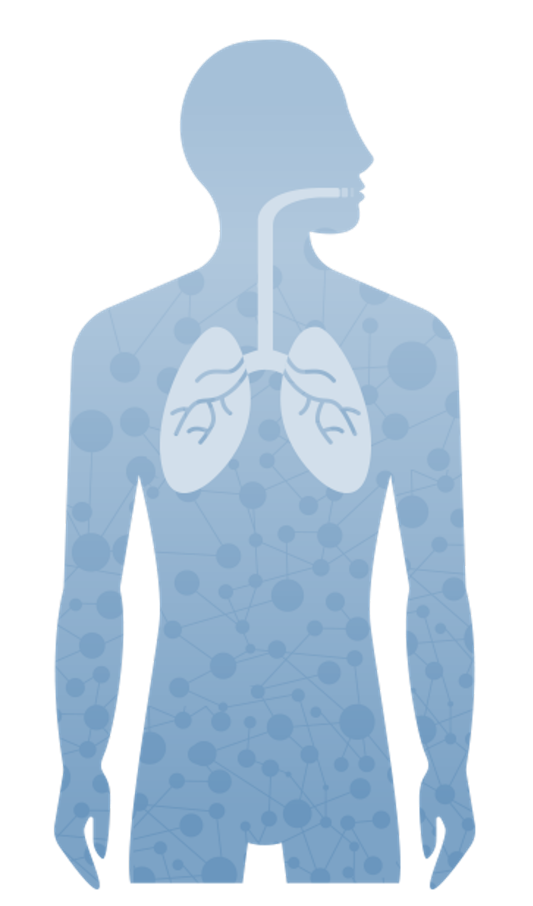
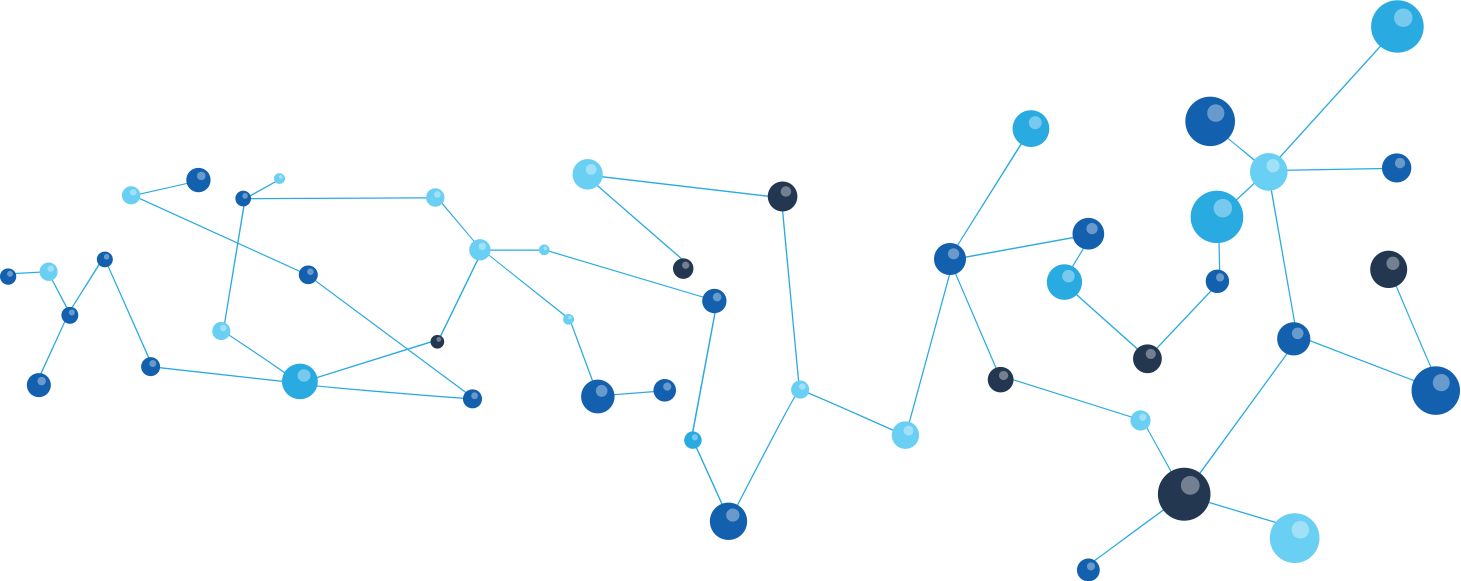

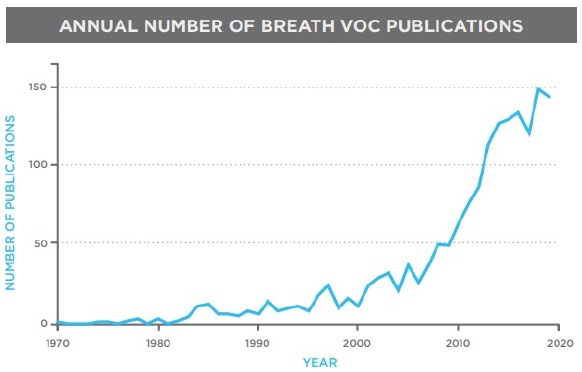 < Breath Biopsy The Complete Guide 3rd Edition, Owlstone Medical >
< Breath Biopsy The Complete Guide 3rd Edition, Owlstone Medical >
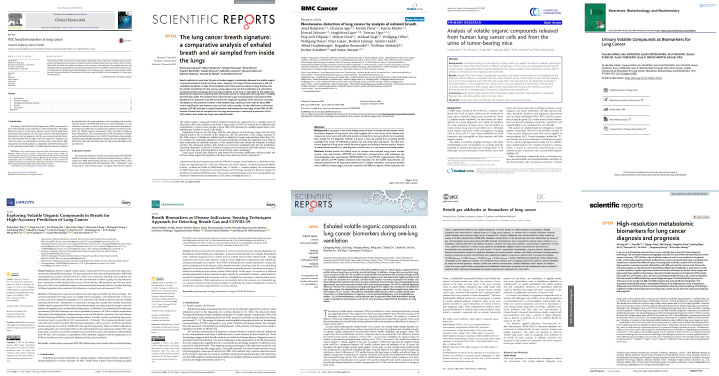 < VOC biomarker papers published in world-class journals such as Nature, Elsevier, Taylor and Francis >
< VOC biomarker papers published in world-class journals such as Nature, Elsevier, Taylor and Francis >
Based on 'molecular medicine' advocated by Linus Pauling, the father of functional medicine, who won the Nobel Prize in Chemistry in 1954 and the Nobel Peace Prize in 1962, a series of studies performed quantification of specific VOCs found in human respiration. As analysis technology progresses, the potential as 'biomarkers' of VOCs contained in respiration becomes more conceivable, and the number of related papers and publications has recently multiplied.
Owlstone Medical, established in Cambridge, the UK, in 2004, announced Breath Biopsy through respiration analysis, and the development of non-invasive biomarkers through respiration is drawing attention.

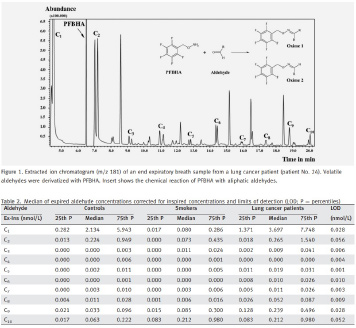
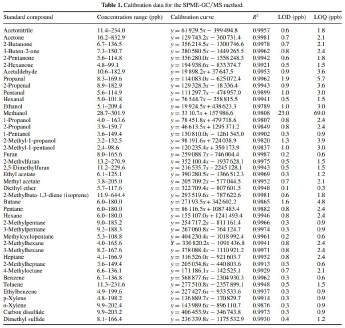
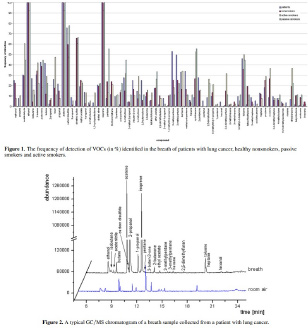
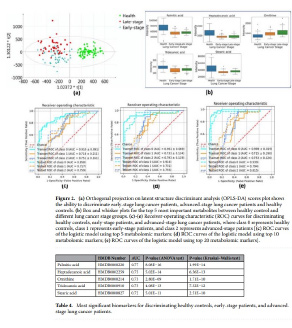
As a result of literature analysis of papers published in more than 4,800 medical journals worldwide, it was concluded that the analysis of volatile organic substances (VOCs) could serve as a new biomarker.
We systematically structured and analyzed these results after identifying more than 50 research papers examining VOCs likely to serve as biomarkers for lung cancer in human respiration.
Through this, we identified VOCs expressing significant changes in respiration of cancer patients, unlike healthy people, among more than 1,000 different VOCs. In a recent study conducted in Taiwan, significant changes were detected in a total of 116 VOCs, and 77 VOCs were commonly found in many studies over the years. According to the structural analysis results of all these studies, we selected specific VOCs that were judged to be most suitable for diagnosing lung cancer.
We identified VOCs with high biomarker potential through VOC biomarker thesis analysis and independent experiments at Tohoku University, Japan.
Through many studies, we specified three VOCs with significant differences in concentration between cancer patients and healthy people among VOCs found in respiration and urine.
The three VOCs identified as potential biomarker candidates were Cyclohexanone Diisopropylphenol Methylpyrazine





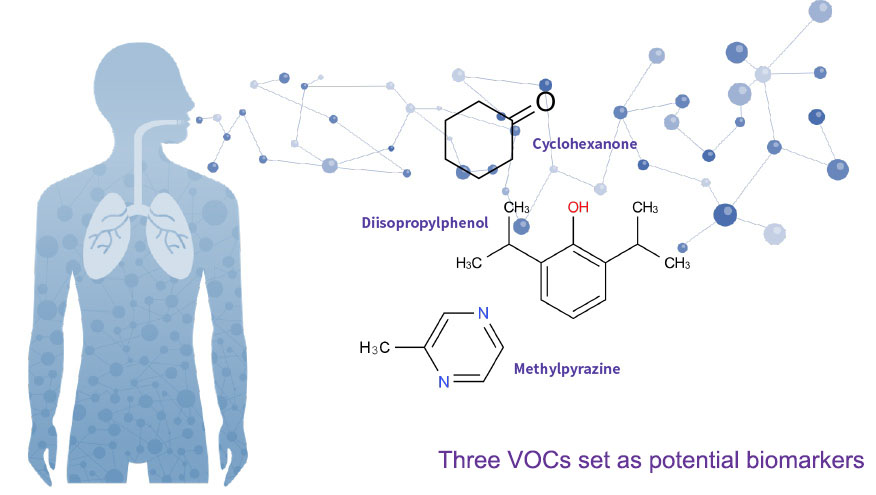

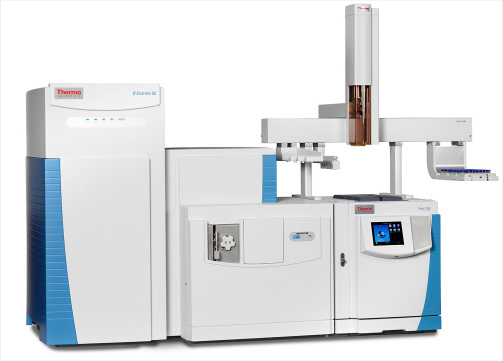 Gas Chromatography
Gas Chromatography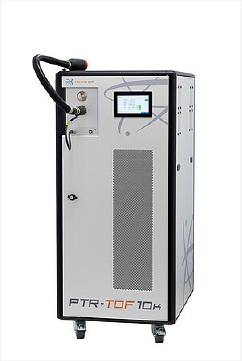 Proton-Transfer Reaction
Proton-Transfer Reaction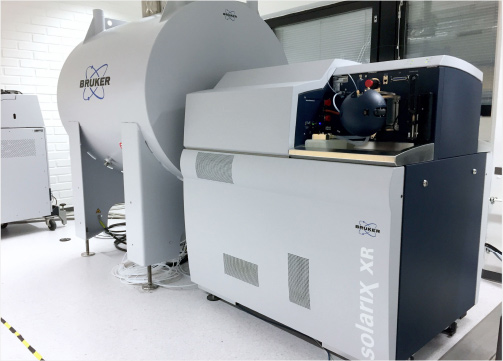 Fourier Transfer Ion Cyclotron Resonance
Fourier Transfer Ion Cyclotron ResonanceThe analysis methods for VOCs included in respiration are also sophisticated with the development of advanced science and technology and the development of mass spectrometry.
Conventional respiration analysis methods derived the results by taking a patient's breath sample, analyzing using mass spectrometers such as GCMS, PTR-MS, and in some cases, ultra-expensive precision scientific instruments such as 'Fourier Transfer Ion Cyclotron Resonance Mass Spectrometry', and converting analysis results measures into data.
These methods are not readily available and therefore have limitations as immediate diagnostics in the field because they require expensive precision machines and enough human resources, such as researchers and system engineers, who can analyze the results, as well as time and space limitations.
One needs to create easy-to-use technology capable of ultra-precise diagnosis to develop biomarkers of VOCs through respiration and to succeed in molecular diagnosis through respiration.